![GROW Beautiful PHLOX from Seeds NOW [Start To Finish]](https://i.ytimg.com/vi/jVdyG1pfoDQ/hqdefault.jpg)
Content
Phlox are fragrant summer flowers that will brighten up any garden. Some low-growing varieties, such as creepers or forest phlox, are often used as ground cover plants. Other varieties, such as garden and meadow phlox, grow tall and are commonly planted in gardens and city beds. Choose a variety that works for your garden and enjoy the gorgeous flowers all summer long. Read our article to find out how to grow these plants.
Steps
Method 1 of 2: Planting phlox
 1 Decide what kind of phlox you want to grow. Phlox varieties are distinguished by a variety of colors: white, pink, red, purple, blue. Different varieties are used in different parts of the garden. Find out which ones grow best in your climate. Phlox seedlings can be purchased from nurseries or gardening stores and planted in the ground at any time during the growing season. Your nursery or shop will advise you on which strain is best for your garden.
1 Decide what kind of phlox you want to grow. Phlox varieties are distinguished by a variety of colors: white, pink, red, purple, blue. Different varieties are used in different parts of the garden. Find out which ones grow best in your climate. Phlox seedlings can be purchased from nurseries or gardening stores and planted in the ground at any time during the growing season. Your nursery or shop will advise you on which strain is best for your garden. - Garden and meadow phlox are ideal for tall curbs as they grow quite wide and tall.
- Low-growing varieties of phlox are ideal as ground cover in shady areas, especially since many of them are resistant to mold.
- You can also order open-root seedlings online, but these are best planted in the spring.
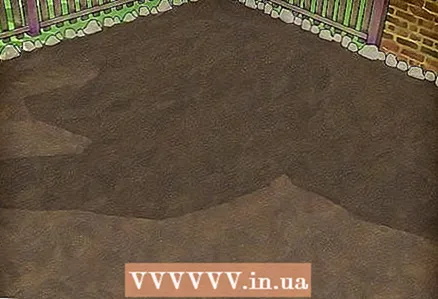 2 Choose where you will plant the phlox. These plants are very unpretentious and will take root almost everywhere, however, most varieties are sun-loving. However, some phlox grow well in partially shaded areas. Find a location that meets the needs of the selected variety.
2 Choose where you will plant the phlox. These plants are very unpretentious and will take root almost everywhere, however, most varieties are sun-loving. However, some phlox grow well in partially shaded areas. Find a location that meets the needs of the selected variety. - Phlox that grow in the shade often have few flowers. They also have a higher risk of disease, so if you choose to plant this plant in a shady area, buy varieties that are mold resistant.
 3 Make sure the soil is well drained. Phloxes need a lot of moisture, but the soil in which they will grow should not be waterlogged. To make sure that the soil is permeable to water, test it after a heavy rain.If you see standing water and puddles, the drainage is poor. If the ground is wet, but there are no puddles on it, then you can safely plant your phloxes there.
3 Make sure the soil is well drained. Phloxes need a lot of moisture, but the soil in which they will grow should not be waterlogged. To make sure that the soil is permeable to water, test it after a heavy rain.If you see standing water and puddles, the drainage is poor. If the ground is wet, but there are no puddles on it, then you can safely plant your phloxes there. 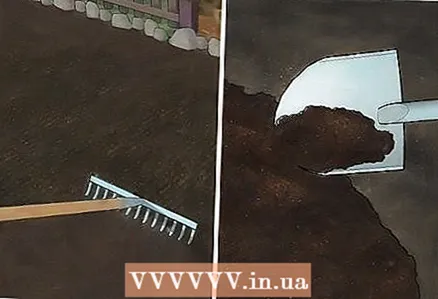 4 Dig up the soil and add compost to it. Phloxes like to grow in well-fertilized soil, so compost must be added to the soil before planting. Dig up the soil to a depth of 30 cm and add compost or peat to it.
4 Dig up the soil and add compost to it. Phloxes like to grow in well-fertilized soil, so compost must be added to the soil before planting. Dig up the soil to a depth of 30 cm and add compost or peat to it. 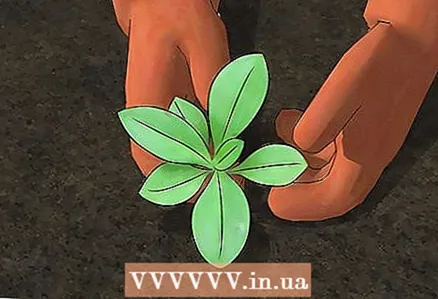 5 Plant phlox when the frost is completely gone. Dig holes 30–60 cm apart, depending on the plant variety. The hole should be twice as wide as the root ball of the plant. Plant the phlox in the pits and sweep the soil around the base of the stem. Then the phlox needs to be watered. SPECIALIST'S ADVICE
5 Plant phlox when the frost is completely gone. Dig holes 30–60 cm apart, depending on the plant variety. The hole should be twice as wide as the root ball of the plant. Plant the phlox in the pits and sweep the soil around the base of the stem. Then the phlox needs to be watered. SPECIALIST'S ADVICE 
Maggie moran
Home and garden specialist Maggie Moran is a professional gardener from Pennsylvania. Maggie moran
Maggie moran
Home and garden specialistBefore planting phlox, find out the date of the last frost in your area. Gardener Maggie Moran advises: “Phlox should be planted in the spring. It is generally recommended to plant them after the last frost, depending on where you live. Check the gardener's calendar or ask your local nursery when the last frost is expected in your area. "
Method 2 of 2: Caring for phlox
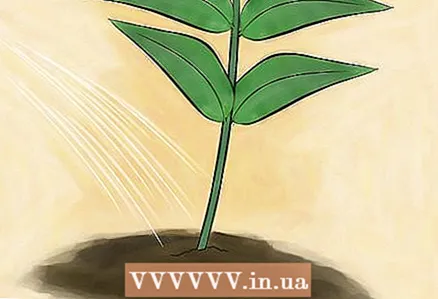 1 Water phlox thoroughly. Water your plants thoroughly throughout the season. Phloxes do not like dry soil. Water the plants at the roots, not on top. Avoid getting water on the leaves to prevent mildew.
1 Water phlox thoroughly. Water your plants thoroughly throughout the season. Phloxes do not like dry soil. Water the plants at the roots, not on top. Avoid getting water on the leaves to prevent mildew.  2 Fertilize phlox immediately after planting. Use a 10-10-10 fertilizer that contains 10 percent nitrogen, 10 percent phosphorus, and 10 percent potassium. Re-fertilize the plants when they bloom. In the following years, add compost to the soil around the phlox every spring.
2 Fertilize phlox immediately after planting. Use a 10-10-10 fertilizer that contains 10 percent nitrogen, 10 percent phosphorus, and 10 percent potassium. Re-fertilize the plants when they bloom. In the following years, add compost to the soil around the phlox every spring.  3 In early summer, cover the soil around the plants with mulch. Do this when the days start to get hotter. Mulch will protect the soil from drying out and overheating and prevent weeds from growing. Add fresh mulch under the phlox at least once a year.
3 In early summer, cover the soil around the plants with mulch. Do this when the days start to get hotter. Mulch will protect the soil from drying out and overheating and prevent weeds from growing. Add fresh mulch under the phlox at least once a year.  4 Prune phlox. For tall varieties of phlox, leave 5-7 stems per plant and cut off the rest. This will improve air circulation between them, increase the number of flowers and reduce the likelihood of disease. Pinch the tops of the remaining stems to slow down their growth and make the plant more lush.
4 Prune phlox. For tall varieties of phlox, leave 5-7 stems per plant and cut off the rest. This will improve air circulation between them, increase the number of flowers and reduce the likelihood of disease. Pinch the tops of the remaining stems to slow down their growth and make the plant more lush. - Start pruning tall varieties of phlox when they are 15 cm tall. Lower phlox that are not groundcover can also be pruned when they are 10-15 cm tall.
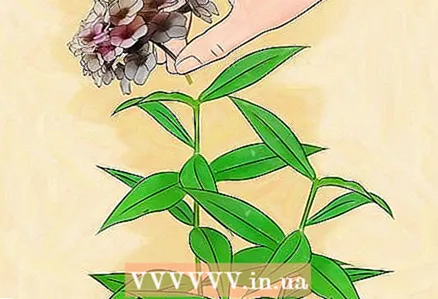 5 Remove dead buds when the plant has faded. Some phlox varieties can bloom a second time if the dead flowers are removed.
5 Remove dead buds when the plant has faded. Some phlox varieties can bloom a second time if the dead flowers are removed.  6 Separate phlox every 3-5 years to multiply and thin out. Dig the entire plant out of the ground with roots. Cut off the parts from the outside from which new stems and buds have begun to grow. If the inside of the shrub is woody, cut and discard the woody parts. Plant the plant back and plant the separated parts elsewhere in the garden.
6 Separate phlox every 3-5 years to multiply and thin out. Dig the entire plant out of the ground with roots. Cut off the parts from the outside from which new stems and buds have begun to grow. If the inside of the shrub is woody, cut and discard the woody parts. Plant the plant back and plant the separated parts elsewhere in the garden. 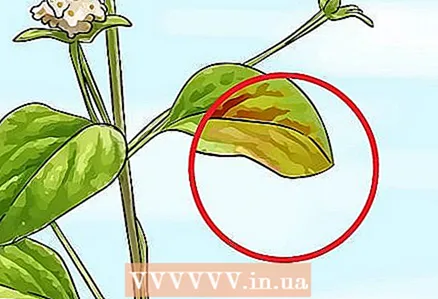 7 Protect confusion from disease. Air, sun, and proper watering can help prevent common phlox diseases such as rot or mold. Remove affected leaves immediately.
7 Protect confusion from disease. Air, sun, and proper watering can help prevent common phlox diseases such as rot or mold. Remove affected leaves immediately. - Water phlox early in the morning.
- Remove all mulch and plant debris in the fall to prevent mold and rot.
 8 Protect phlox from pests. Phloxes are most commonly affected by the phlox nematode, but there are other pests as well. Depending on the type of pest you find, ask your gardening vendor to find the right insecticide. Inspect plants for harmful insects, if possible, remove them by hand and destroy. Also remove affected leaves and flowers.
8 Protect phlox from pests. Phloxes are most commonly affected by the phlox nematode, but there are other pests as well. Depending on the type of pest you find, ask your gardening vendor to find the right insecticide. Inspect plants for harmful insects, if possible, remove them by hand and destroy. Also remove affected leaves and flowers.
Tips
- Phloxes are also propagated by cuttings. Cut 7-10 cm from the stem that has no buds or flowers. Remove the leaves from its bottom 3–5 cm and place it in water.Keep the cutting in a sunny location until roots appear, then plant it in the ground.
Warnings
- Seeds from faded phlox flowers are likely to be sterile. Even if new plants grow out of them, the color of their flowers will be different compared to their parents. Most of these phloxes will have pale purple flowers.



